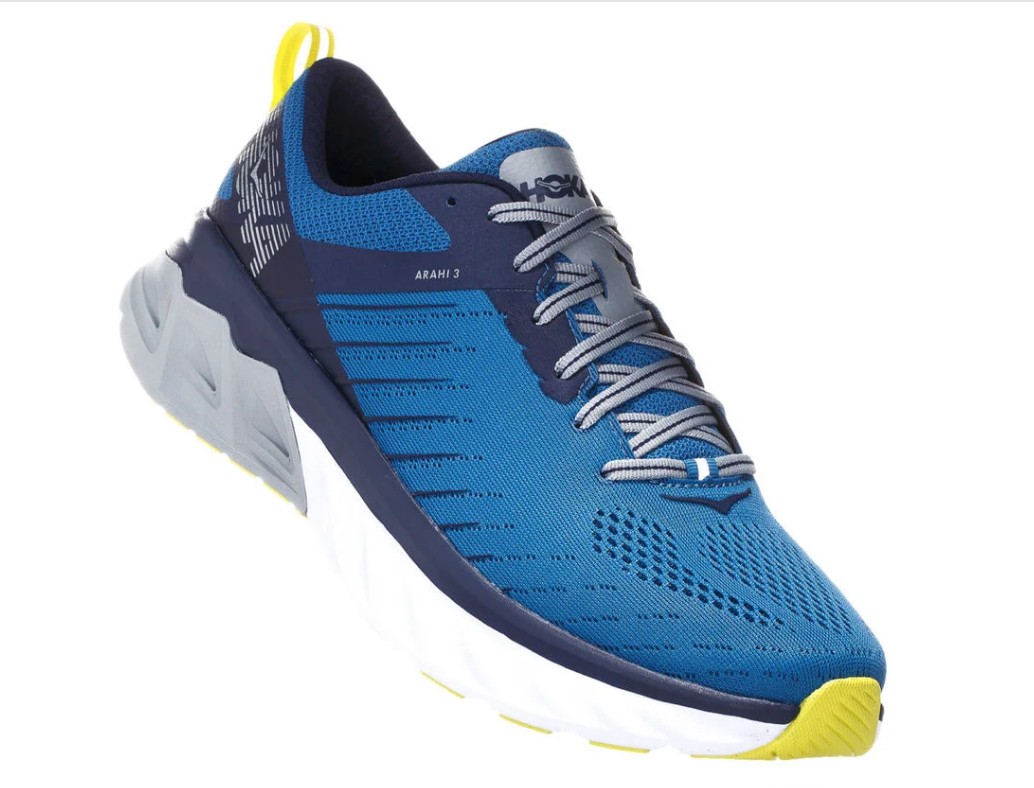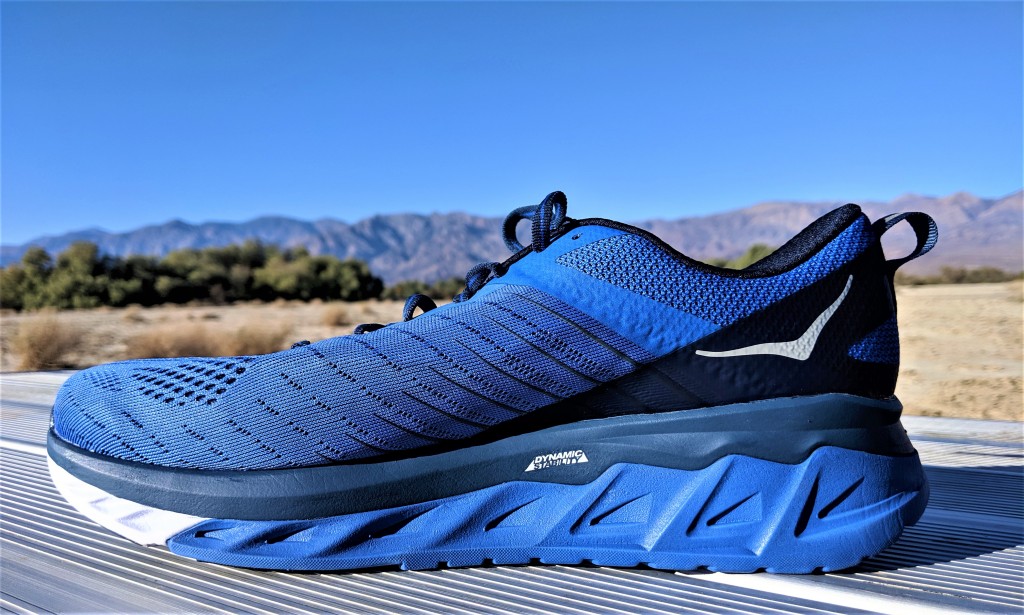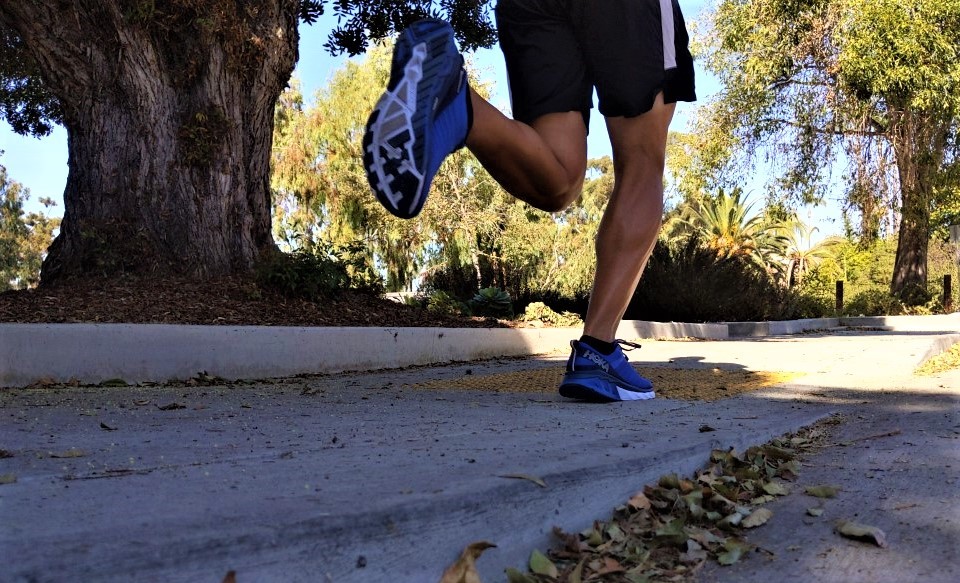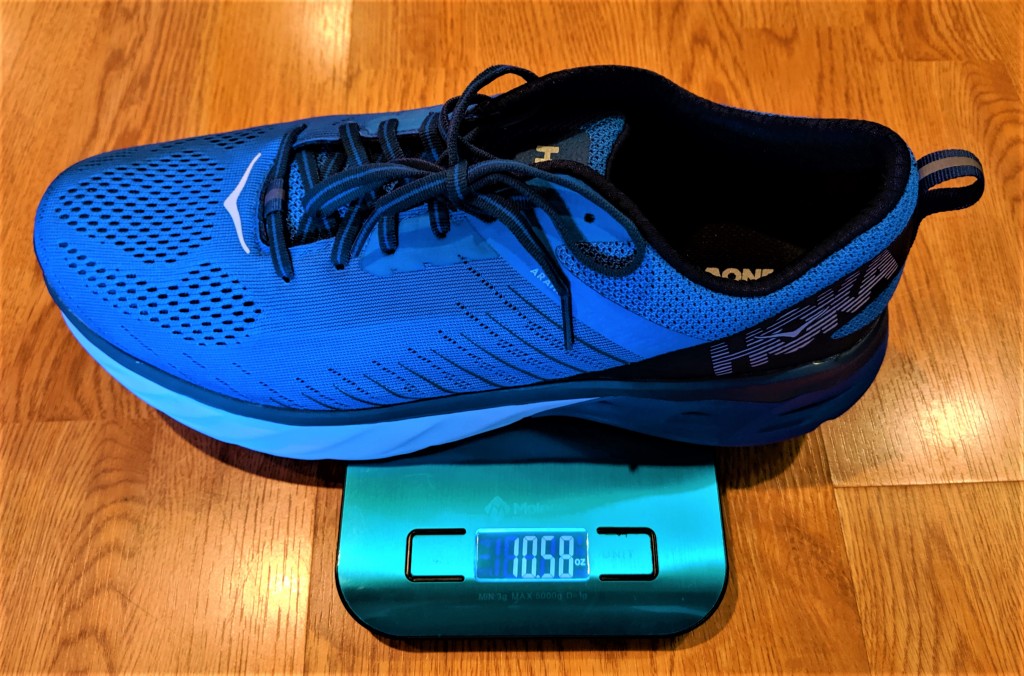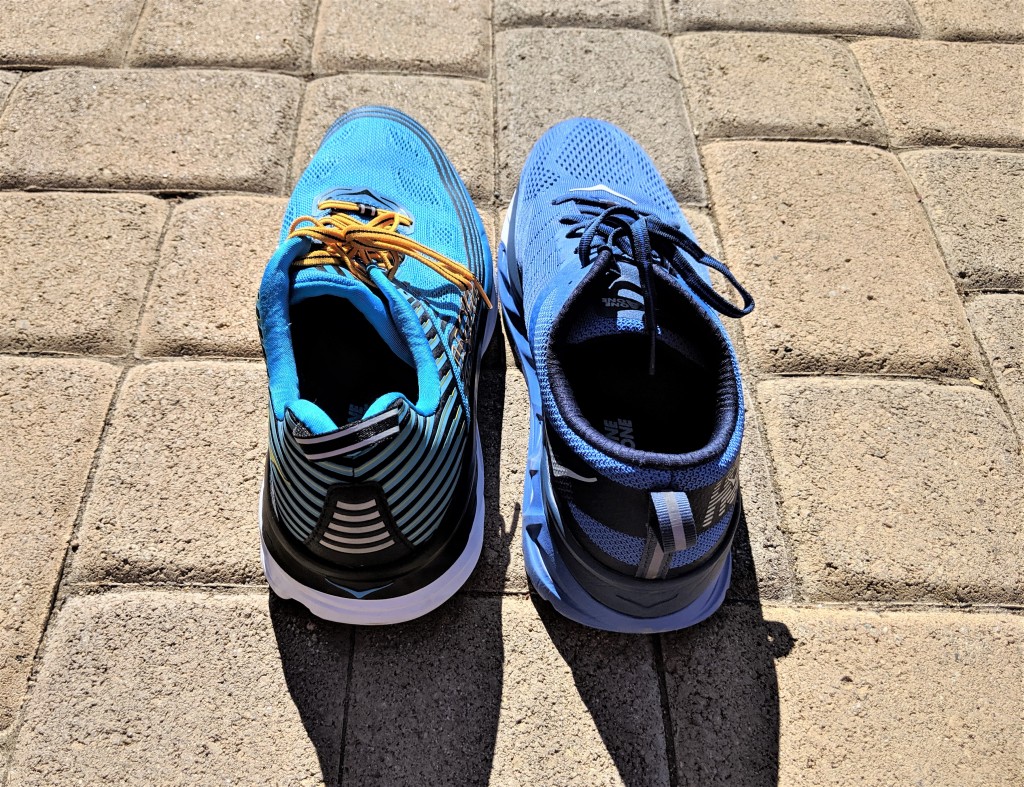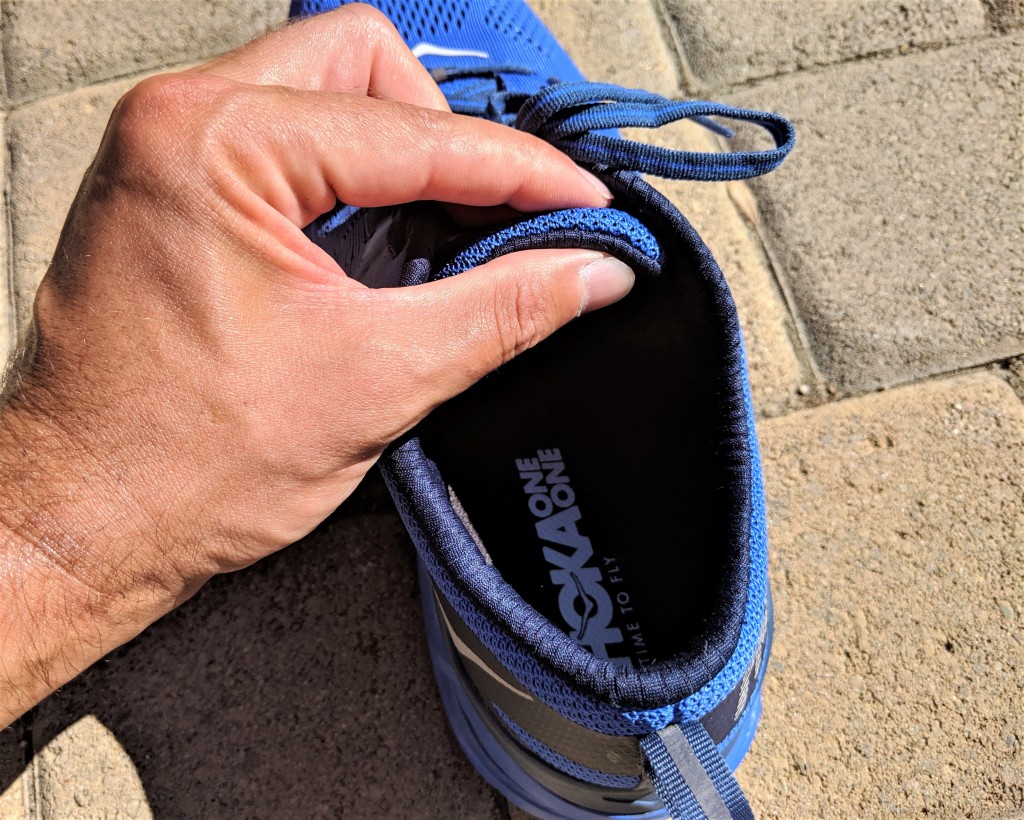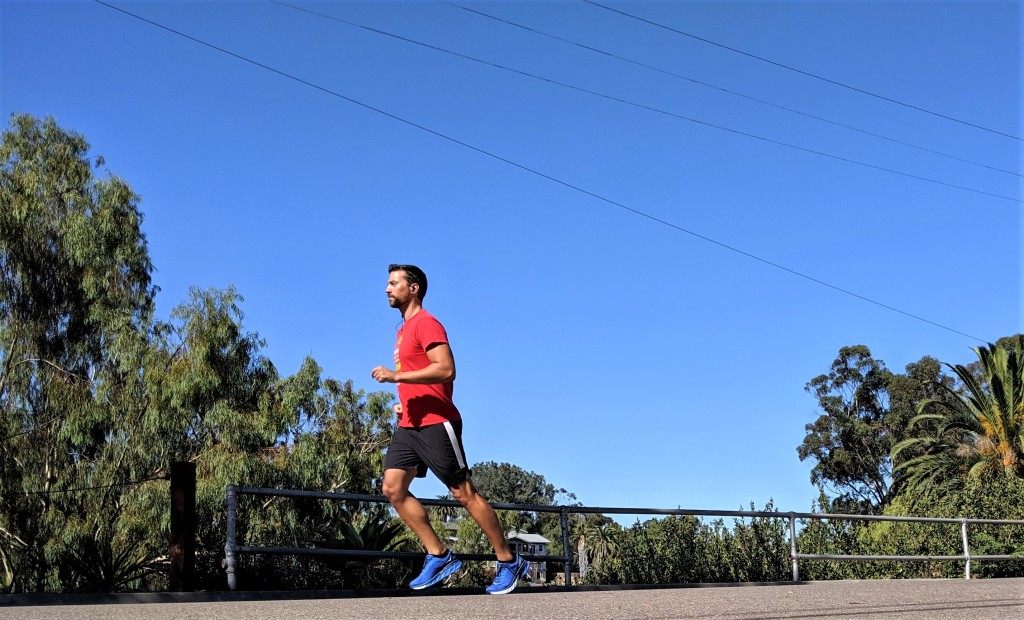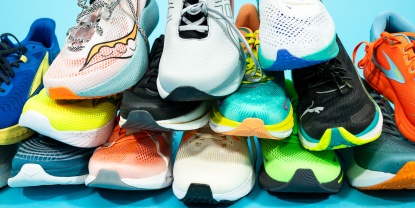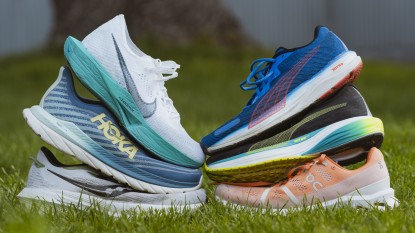Hoka Arahi 3 Review
Our Verdict
Our Analysis and Test Results
The Arahi 3s generally receive such high scores from us because they masterfully deliver support without pushing, grinding, or knocking your feet around with standard stability structures, like heel counters and posts that force your foot into position. They incorporate stability into the general structures of the midsole and upper without needing to add in the extravagant buttressing you find in standard stability shoes. It's a simpler, more elegant solution to noisy gaits.
This isn't just a stability shoe. Runners who need the extra support will likely get the most out of these, but they're versatile enough that just about any runner will be able to appreciate them. They have a fair amount of cushion simply because they have such a thick stack, but it's firm enough that it doesn't drown the stride the way many plush stability models do.
Performance Comparison
Hoka's Arahi 3s handily picked up our Top Pick for Stability Award with their excellent performance across most of the measures, but particularly responsiveness and comfort. We spend the remainder of this review looking at their performance across each of our measures.
Responsiveness
The Arahi 3 is one of Hoka's most responsive models. Its thick rubberized foam midsole balances cushion and response to arrive at a more practical all-around shoe, but it's also probably the stiffest sole in Hoka's lineup. That's a major reason for it picking up our Top Pick for Stability Award. This can be a little confusing for some folks because they so strongly associate Hoka with plush midsoles and find that this model isn't as pillowy as the rest of its family.
Likewise, folks have complained about the lack of arch support in a stability shoe, but we found there to be very little difference in performance when we tested them with arch support insoles - if anything, the performance seemed to be reduced with the inserts. The Arahi design seems to obviate the need for arch support, but that's the sort of thing that individual runners need to assess with their podiatrists.
Consistent with all the best stability running shoes, these were among the highest-scoring in this category. Relative to earlier models, this version has more midfoot lockdown for improved stability. That also helps reduce the need for tighter heel cups and other shenanigans because the shoe is more compliant and moves with the foot in a more natural way.
Its improved stability can be partially attributed to the Hoka J-Frame, which consists of a higher-density foam along the lateral edge of the foot to reduce pronation - without adding harsh structures like heel posts and aggressive counters. Its midsole and balance meta-rocker have also been refined to gently direct the foot into a more natural gait - yet another reason we felt so strongly about the scoring and performance with this shoe.
Landing Comfort
These running shoes have a lot going for them when it comes to landing comfort. Somehow Hoka was able to take a hoof of a shoe and turn it into a nice paw (no offense to the ungulates, they seem to get along just fine). The upper comes with just a bit of cushion underfoot in the form of an extra-plush dual compound memory foam sockliner, which improves landing comfort and reduces the pain from miles of hard pounding or eve, forward-leaning sprints, but it's obviously a distance shoe, not track spikes, though we did notice that Hoka's putting out track spikes now!
It scores quite well here, but there are a few other models ahead of it, including some of the other stability competitors. The tradeoff is that it's faster. It's tough to feel fast and light on your feet in traditional stability models. They have a lot of internal structures, really mushy, plush midsoles, and tons of cushioning in the upper, so they can bog you down. You don't get that with these, and that's why we liked them so much and why they earned our Top Pick for Stability Award.
The midsole remains one of Hoka's stiffest soles, but because it's about 30mm of rubber foam stack, it's necessarily cushiony and absorbs the hurtiest impacts while saving your knees. Happily, it's balanced enough that it doesn't eat up your entire step. Even so, there were complaints of lots of returns because these are stiff, and folks are after cushier shoes and are turning to Hoka expecting same. That shouldn't be a problem so long as you know ahead of time that you're buying a stability model with a good deal of pop in the midsole.
Weight
The Arahi 3 comes in at 21.2 ounces. Typically stability shoes are massive both in size and weight. They're certainly not the lightest running shoe, but it's really not bad for being the largest stability shoe in the lineup. The Hokas got down to such a low weight because they were able to strip the shoe of its stability features by focusing on a midsole that would both cushion and gently stay the foot, which resulted in a thoughtful, well-designed multi-density sole.
That stripping-down also involves the upper's downsizing. It's a pretty lean mesh with minimized support structures embedded within it. The padding is also really minimized, but it retains a sleek, natural fit, so you don't notice any scrimping. If anything, it feels more like a minimalist shoe set atop a few inches of firm marshmallow.
Sure, there are lighter shoes out there, but if you want a stability model and are concerned about weight, you've probably found one of the best compromises on the market with the Arahi 3. We were quite pleased to find that they were as light as some of our favorite racing flats.
Durability
The Arahi 3 primarily uses Hoka's usual tough, coarse upper mesh to retain durability, but it also features some finer mesh, which may not be as impervious. Its rubberized foam outsole improves responsiveness and traction, but it won't have the greatest longevity. We noticed some wear earlyish in our testing. And while we didn't see it, there were reports of glue from the upper breaking down prematurely, which is something to keep an eye out for.
The two biggest durability concerns tend to be that the midsole loses its responsiveness and that the outsole wears down. The rubber foam has a long life, so the midsole breakdown isn't a serious concern here. The biggest thing that might help is a stronger outsole. It has a textured TPU toe reinforcement, which is helpful, but most runners are going to be grinding up the remainder of the outsole. That said, most runners are going to get their mileage in without serious problems of degradation. We certainly don't have any reservations with them.
Upper Comfort
We'd call the engineered knit upper comfort serviceable for a distance shoe. It's not overflowing with padding and cushion like a lot of stability shoes, but it gets the job done. We're also of the view that tons of padding can become a bit of a pain because it gets hot and holds sweat and may add unnecessary friction. On balance, the leaner upper probably improves the running experience over time. In any case, it works out for the Arahi 3s.
Even with its lean build, it does pretty well in the general lineup of competitors. It falls more to the utilitarian side of comfort, focusing more on reduced weight and improved control. What it does have going for it is its ultra-plush dual compound memory foam sockliner. It's just a fine layer of padding to add a little finesse to the fit.
This latest version has received a few complaints about narrowness. That could be because it's designed to improve midfoot lockdown and responsiveness, but even so, the toebox is pretty darn roomy. Plus, there's a wide version available. Another area of concern was the minimal arch support, which we addressed earlier in this review. We don't find that it's a dealbreaker given the stability of the overall design, but that's for each runner to determine for himself (perhaps with a podiatrist's guidance).
It's one of the best stability running shoes out there right now, and a minor concession on padding isn't worth missing the ride. We suspect most runners will be happy in these.
Breathability
The thin upper is primarily made up of large-gauge engineered knit mesh, so there's lots of room for heat and moisture to escape. There are a few areas where there are multiple layers of finer mesh that could limit heat exchange, but the upper is generally pretty open. The heel and tongue have a lean layer of padding, but it works more like a practical bumper than an enveloping cushion, so insulation is limited, and air can easily flow through.
These kicks are definitely more breathable than your average running shoe and a good deal superior to even the best stability running shoes, but it isn't the most breathable. You probably won't find a stability model ranking too high in breathability. They typically have a significant amount of padding and impermeable internal stability structures, so the Arahi has an edge up there.
Value
Hokas are something of a novelty shoe brand, so you might be getting a little bit of a premium on that front. The Arahi 3 is also a stability running shoe, and can typically be a little more pricey. However, they are less than standard stability shoes, which is nice. We'd say they're worth the going price, especially because they're so darn light and versatile.
Conclusion
We felt that these were the best running shoes for stability. They dominated in responsiveness and support without compromising their weight or feeling unnatural, which is why they earned our Top Pick for Stability Award. So many of the stability shoes beat your feet to death with counters, posts, and other internal structures that cajole your feet into place, then smother it all in padding to make sure you can't feel it while it's happening.
The Arahi 3s strip the shoe down and can achieve better control almost entirely with a well-designed midsole. It's true that it doesn't have the supple padding and extreme comfort of those more traditional models, but it just doesn't need to. It's a faster, leaner, lighter shoe that you can take out without worrying about feeling like you're running with mud on your shoes, and is an excellent choice for those looking for a stability model to remain competitive.


